Superhot Review - Tron, Matrix and Tarantino-like slaughter
No great graphics, no epic story, and no symphonical music – Polish shooter Superhot has been rousing emotion all over the gaming world for two years. Has the final build managed to meet the expectations?
The review is based on the PC version.

- Ingeniously merged mechanics of a turn-based FPS and time manipulation;
- Cinematic fights and shattering the glass opponents is a lot of fun;
- Cool hidden secrets;
- Game menu is much more than we’re used to;
- Consistent, minimalist setting, very atmospheric in every aspect.
- Too short and too easy story mode;
- All stages immediately throw us into the fray;
- Additional modes are only for the enthusiasts.
How to set in motion a great and quite original idea for an unusual shooter with interesting gameplay mechanics involving manipulation of time? You can do it in a traditional way: create a game about a certain detective - or any other character, for that matter - and treat the time manipulation as a spectacular effect; a sort of movie-like addition. Another way is to come up with a complicated and fancy storyline about space-time disturbance, which would actually justify the ability to manipulate time by the protagonist. The small Polish studio have chosen a third way – to subordinate every aspect of the game to this single novelty. It became the very focal point around which all the rest revolves. And that’s because it had all actually begun with that single idea and a creation of a couple levels for an online competition. The minigame was then available in a browser version, and the next steps were the Steam Greenlight, and a Kickstarter campaign. However, the game has not seen the daylight for the next two-and-a-half-year. During that period the devs were working on implementation of the elements promised in the crowdfunding campaign, such as improved animations and additional game modes. Yet Superhot itself remained minimalistic to the bone and frugal in every aspect, but not due to haste or lack of ideas. It's a very well-thought, surprising game in which you see a single, coherent concept implemented from beginning to an end. I'm just afraid that there’s a bit too much of that minimalism.
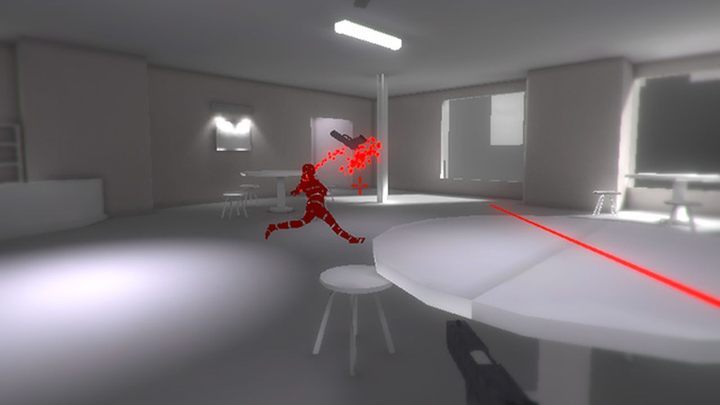
Superhot first came to life in August 2013. Created with an online competition in mind, it was a work of people from Blue Brick – a studio which wasn’t dealing with videogames on the daily basis at the time. The devs say they were inspired with Time4Cat game, and a videoclip of a Russian band Biting Elbows. A prototype of a full game followed, revealed at the National Conference of Video Games Developers in Gdansk, winning the game its first award at the Developers Showcase, and increasing the hype around the Internet. Superhot reigned discussion forums and headlines of the leading gaming sites, and the devs decided to fully commit to the production under the name of Superhot Team. Then came Steam Greenlight, where Superhot reached the top of the rankings in just three days, and the Kickstarter campaign. The required amount was obtained in less than 24 hours, and among the supporters was Cliff Bleszinski himself. The author of the Unreal and Gears of War series would later contribute to the developement of one of the levels in the final game.
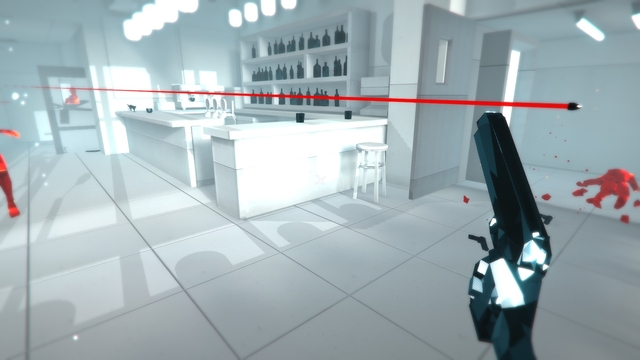
Matrix by Quentin Tarantino
First time I saw the game, it reminded me of the movie Tron with a touch of Matrix and a bit of Tarantino’s style. Sterile white locations, blood-red enemies, and bullets freezing in the air, then again flying our way. “Time only flows if you move” – this simple principle, on which Superhot was based, makes the game feel different. It feels special, and gameplay is hypnotic – much like the name of the game itself, being repeated like some sort of mantra from time to time. Each level takes us into a freeze-frame of an action movie, right into that moment when things had just gone to hell and the only way out is an erupting shootout. It is that “active-pause” that gives us control over the events – should I start shooting, or get out of the line of fire? Can I make it to that rifle over there? You don’t need skill here, nor accuracy – you need calculation, a cool head, and the ability to see things in advance. Superhot gives massive amount of fun in these moments, when fallen enemies shatter into thousands of pieces, or a dozen of bullets fired from a shotgun pass you by an inch, or when you cut an incoming bullet in half right in front of your face, with a samurai sword.
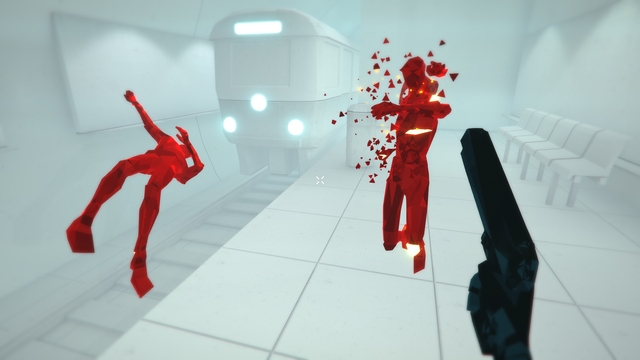
During the fights, hand-to-hand combat can be equally practical, as well as many different weapons lying around the levels, such as hammers, clubs, cues, and the abovementioned samurai sword, which makes the biggest fuss. Planning mixed with spectacular fights makes Superhot a unique turn-based FPS, though perhaps more appropriate comparison would be just a puzzle game. This is because the levels are rather small, and the number and arrangement of the enemies – at least in the story mode – is always the same. The upside is the design and the level of detail of the interiors, which, in spite of the minimalism, is quite high. The offices, railway stations, bars, parking lots, and many other locations are full of small touches, that introduce the mood of the 80s.
More than just a menu
These references to the previous era are also present elsewhere, and it’s just as ingenious as the game itself – namely in the menu. Stylized for a popular file manager called Norton Commander from the days of MS-DOS, it not only allows you to manipulate few options in a manner appropriate to the text mode, but it also contains a lot of other files and folders – fully functional and filled with content. You'll find mini-games, ASCII image gallery, and simple animations. It is just a small nuance, but it shows how much attention was paid to the detail of the entire production. The menu also stands out with the fact that, surprisingly, it plays an important role in the story of Superhot. The game doesn’t have a traditional storyline – the plot fits the originality of the whole project. The game itself is a sort of the main character, and everything revolves around it, including the player – meaning us. We have moments that are downright brilliant – like the one, where the devs seem to had perfectly predicted my reaction to finishing the game. And we have those, that didn’t work out that well – at some point, the main thread becomes too “pushy”, interrupting the action too often, it takes us to the main menu, and forces to a pretended chat conversation. This is unfortunate, because it interrupts the already short levels and small maps, which sometimes can be finished in under a minute. We sporadically have an occasion to wander around some bigger locations and more spacy rooms. You can really notice there how much the game benefits from the atmosphere of intriguing secrecy. Unfortunately, instead of balancing the elements of exploration and the ability of surprise attacks with the combat itself, most of the times we are immediately in the center of a battle. I certainly approve of the fact that the game constantly introduces new mechanics until the very end, but then it can be finished in three hours tops. So what else is there after the end?
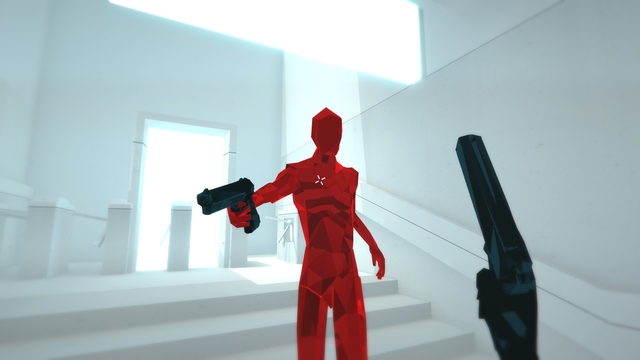
Count (on) the glitches
At the first glance, there are many ways to still enjoy the game after finishing the story. There is a challenge mode, some modifications of gameplay, new locations, and a possibility to turn off the time limits. Contrary to a rather easy campaign, it’s here where we can find a real challenge: finish a level without a weapon; with only one bullet in each gun; or with a single life. It all takes place on the levels we already know from the story mode, though. New maps are available in the “Endless” mode, but the only objective there is to repel waves of enemies – because the environment doesn’t change, it gets boring pretty soon. There is one challenge set in the prototype of the game back from 2013, where the color scheme was much different. That brings me to a conclusion that the lack of diversity is off-putting; there isn’t even a simple change of colors as for black and green, for instance, which could be suggesting a night.
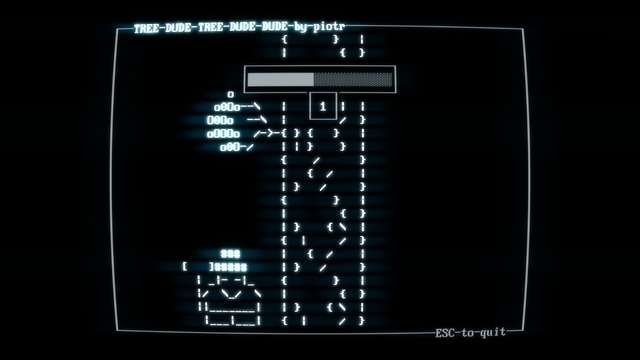
It seems that there are many possibilities, but rolling over the same schemes with imposed limits was equally un-immersive as the short plotline. Fortunately, there is an icing on the cake – the hidden content. Most of the levels are not merely claustrophobic arenas for battling the red silhouettes – they are complex mazes, where paths leading to mysterious terminals can be found, unraveling different mysteries of the game. The value of these secrets is arguable, but it was finding the way to them that really got me. Sometimes it was enough to jump somewhere; sometimes you had to find a wall of a slightly different color; but most of the times, finding the right path was truly challenging – occasionally, I had to find glitches to get to a different part of the map. As a reward, we can discover different objects and places – palm trees, coffins, neon lights, shoes, weird mechanical dogs, a monitor with an accurate comment of the developers, and many other secrets that await somewhere behind a wall and three dumpsters. Those secrets, and paths leading to them, were my favorite way of prolonging the game. They do match the array of interesting solutions of Superhot perfectly.
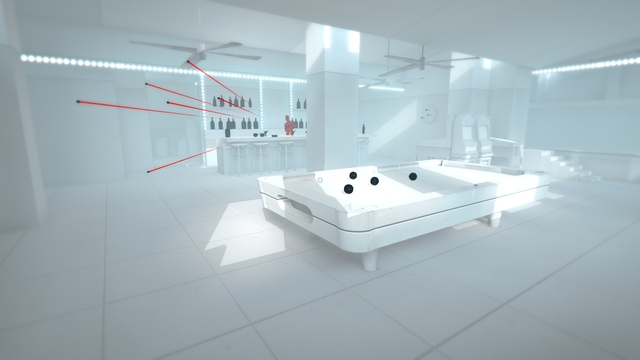
I thought we were cool
Is a shooter consisting of slow and deliberate steps, a challenge mode, and a handful of entertaining secrets enough to make a game successful and worthwhile? Considering that Superhot used to be only three levels long – it has really came a long way, and underwent many modifications and improvements. But if we put this game on our shelf next to another recent indie title of roughly the same price – Unravel, offering six hours of linear story and beautiful graphics, things start to look less pretty. If you’re more into the story than the gameplay, and you don’t think you’re going to enjoy the additional game modes and repeating the same levels – Superhot’s bid may seem moderate; more like a mobile game. But those who like to sink their teeth into proper shooting, grinding your skills on each level, and completing additional challenges, will feel at home. And it will be a cleverly designed and good looking home. The developers have surprised me with an original attitude towards the FPS genre, and a great execution of the time-manipulation idea. This game may not be Super in its every feature, but it certainly is Hot!
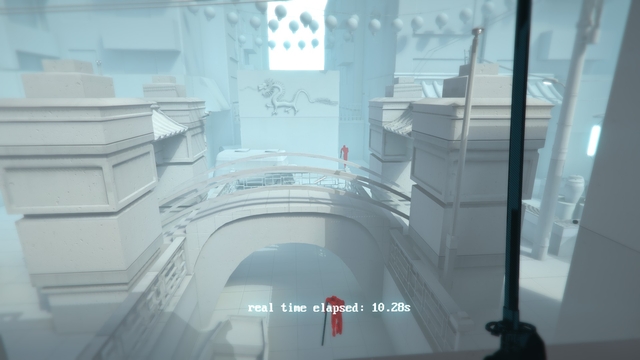
SUPERHOT
Superhot Review - Tron, Matrix and Tarantino-like slaughter
No great graphics, no epic story, and no symphonical music – Polish shooter Superhot has been rousing emotion all over the gaming world for two years. Has the final build managed to meet the expectations?

